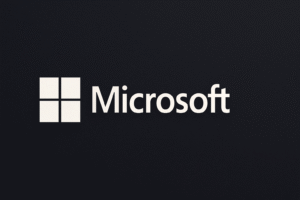Self-employment can be an empowering career choice, offering flexibility and autonomy, but it also presents unique challenges, particularly in the realm of retirement savings. As an increasing number of individuals opt for freelance and entrepreneurial paths, understanding how to effectively plan for retirement becomes critical.
Understanding the Landscape of Self-Employment
Self-employed individuals often face uncertainty regarding their long-term financial futures. Unlike traditional employees, they do not benefit from employer-sponsored retirement plans or matching contributions. Instead, it is incumbent upon them to actively engage in retirement planning to ensure a secure financial future. According to the U.S. Bureau of Labor Statistics, approximately 10% of the workforce is self-employed, reflecting a significant segment of the economy that requires tailored retirement solutions.
Market Impact
The rise of gig economy jobs combined with the ongoing trend toward remote work has opened the door for many to pursue self-employment. Financial advisor Laura Adams notes that “the lack of a consistent paycheck can be daunting, making it particularly vital for self-employed individuals to build a robust financial cushion for retirement.” Without the safety net of a regular income, self-employed individuals may find it more challenging to save consistently for retirement.
Statistics suggest that self-employed individuals are less likely to save for retirement compared to their traditionally employed counterparts. A report from the National Bureau of Economic Research indicates that only about 30% of self-employed workers have set aside funds in a retirement account, compared to approximately 60% of employees who have access to employer-sponsored plans. This disparity highlights the urgent need for strategic planning in retirement savings for those on an independent career path.
Retirement Accounts for the Self-Employed
Fortunately, self-employed individuals have access to several retirement savings options designed to address their unique situations. The most common include:
1. **Solo 401(k)**: This is a popular choice for solopreneurs, allowing for higher contribution limits compared to traditional IRAs. Self-employed individuals can contribute both as an employee and an employer, potentially allowing for contributions of up to $61,000 in 2022 (or $67,500 if aged 50 or older).
2. **Simplified Employee Pension (SEP) IRA**: This option is ideal for freelancers with fluctuating incomes. It permits contributions up to 25% of net earnings, with a maximum limit of $61,000 for 2022. The SEP IRA can be particularly attractive due to its flexibility and lower administrative burden.
3. **Traditional or Roth IRAs**: These are accessible for self-employed individuals and allow for annual contributions of up to $6,000 in 2022 ($7,000 if aged 50 or older). The key difference between the two lies in their tax treatment; Roth IRAs offer tax-free withdrawals, while traditional IRAs provide tax deductions on contributions.
Adams emphasizes the importance of choosing the right retirement account, stating, “The type of account selected can greatly affect the growth potential of retirement savings, as well as tax liabilities in the future.”
Developing a Savings Strategy
To build a substantial retirement fund, self-employed professionals should develop a comprehensive savings strategy that considers income variability.
Establishing a budget that prioritizes retirement savings, even during lean months, is vital. Financial planners often recommend allocating at least 10-15% of gross income toward retirement savings as a rule of thumb. However, given the unpredictable nature of self-employment income, the amount may need to be adjusted based on monthly earnings.
Another effective strategy includes automating contributions to retirement accounts. By setting up automatic transfers shortly after income is received, self-employed individuals can avoid the temptation to reallocate funds for immediate expenses.
Expert Opinion
Many financial experts stress the need for self-employed individuals to seek professional guidance when planning for retirement. “Navigating the complexities of tax codes, retirement plans, and investment options can be overwhelming for many entrepreneurs,” advises certified financial planner Mark McGowan. “Working with a financial advisor can help customize strategies that account for personal financial goals and risk tolerance.”
Additionally, self-employed individuals should periodically review and adjust their retirement plans as income fluctuates or financial goals evolve. Conducting annual audits of one’s savings and investment performance can lead to improved outcomes over time.
What’s Next?
As the landscape of work continues to evolve, with more individuals embracing self-employment, the importance of retirement planning cannot be overstated. With the right strategies, self-employed individuals can not only secure their financial futures but thrive in their entrepreneurial endeavors. Taking proactive steps towards retirement savings is not just a financial necessity; it is a foundational aspect of self-employment that encourages peace of mind and long-term success.
In conclusion, the self-employed workforce faces unique hurdles in retirement savings, but with effective planning and dedication, achieving a comfortable retirement is within reach. Understanding the financial instruments available and developing a strategic savings routine will empower the self-employed to navigate their financial futures confidently.







